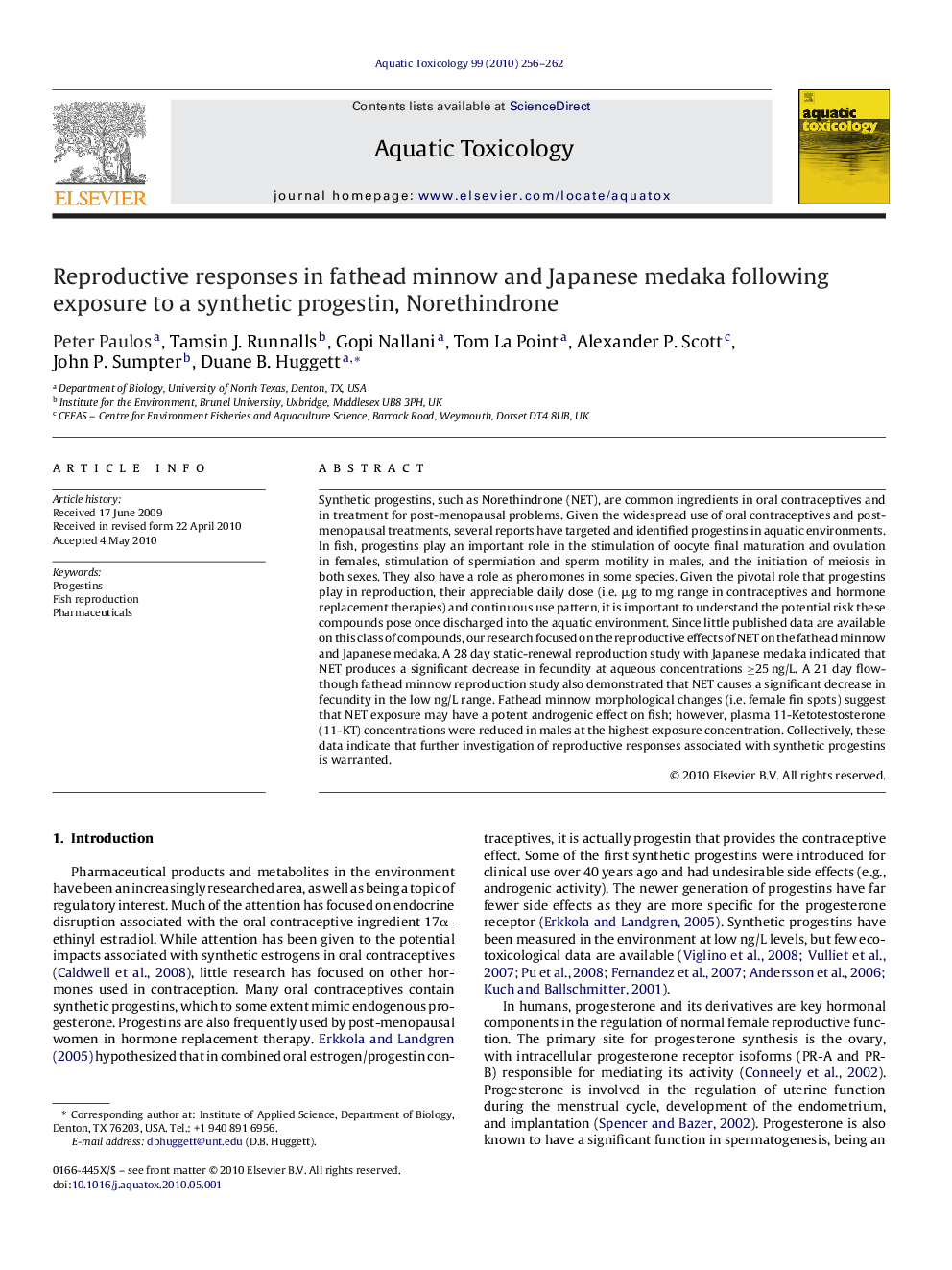| Article ID | Journal | Published Year | Pages | File Type |
|---|---|---|---|---|
| 4530358 | Aquatic Toxicology | 2010 | 7 Pages |
Synthetic progestins, such as Norethindrone (NET), are common ingredients in oral contraceptives and in treatment for post-menopausal problems. Given the widespread use of oral contraceptives and post-menopausal treatments, several reports have targeted and identified progestins in aquatic environments. In fish, progestins play an important role in the stimulation of oocyte final maturation and ovulation in females, stimulation of spermiation and sperm motility in males, and the initiation of meiosis in both sexes. They also have a role as pheromones in some species. Given the pivotal role that progestins play in reproduction, their appreciable daily dose (i.e. μg to mg range in contraceptives and hormone replacement therapies) and continuous use pattern, it is important to understand the potential risk these compounds pose once discharged into the aquatic environment. Since little published data are available on this class of compounds, our research focused on the reproductive effects of NET on the fathead minnow and Japanese medaka. A 28 day static-renewal reproduction study with Japanese medaka indicated that NET produces a significant decrease in fecundity at aqueous concentrations ≥25 ng/L. A 21 day flow-though fathead minnow reproduction study also demonstrated that NET causes a significant decrease in fecundity in the low ng/L range. Fathead minnow morphological changes (i.e. female fin spots) suggest that NET exposure may have a potent androgenic effect on fish; however, plasma 11-Ketotestosterone (11-KT) concentrations were reduced in males at the highest exposure concentration. Collectively, these data indicate that further investigation of reproductive responses associated with synthetic progestins is warranted.
